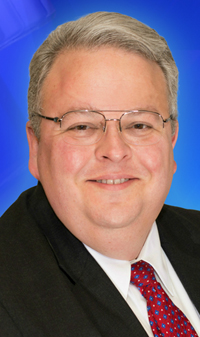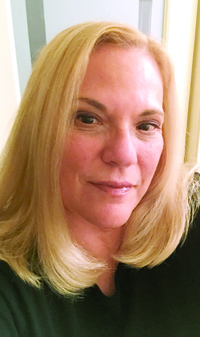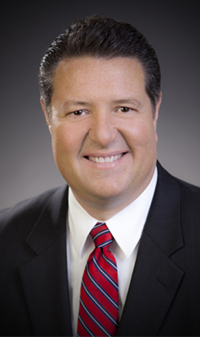YOUNGSTOWN, Ohio – Even before the disruptions of 2020, Mahoning Valley broadcast television news stations were navigating a media environment drastically altered by the emergence of new media platforms and the closing of its largest daily newspaper.
Not so long ago, says WFMJ news director Mona Alexander, “Your 6 and 11 o’clock [newscasts] were your primary broadcasts. And everybody had a noon in the market and the morning show started. But it was all broadcast oriented. Now the broadcasts are still incredibly important and that is where a large majority of people are getting their news but they want it on demand.”
The scheduled broadcast news program remains the major means of distributing content, says Mitch Davis, news director for television stations WKBN, WYTV and WYFX. The stations, owned by Nexstar Media Group in Irving, Texas, offer about a dozen hours of news programming per day.

More than half of the station’s advertising revenue comes from the newscasts, says David Coy, general manager of the Nexstar stations here.
Among the four stations that provide news content in the market, the ratings are “kind of a horse race,” Coy says. Where the three traditional network affiliates compete, WKBN is No. 1 in some areas, WFMJ is tops in others and WYTV comes in third.
“WKBN is stronger at 6 o’clock and WFMJ is a bit stronger at 11 o’clock. A lot of that oftentimes is due to the lead-in, especially in prime [time],” Coy says. “The ratings for our Fox station are particularly good because it’s a newscast of convenience. We have the 10 o’clock news where we have no [local news] competition.”
The 7 to 9 a.m. news on WYFX also has no local competition and does well in the ratings, Coy says.
Among the biggest changes to broadcast news is its continuous nature nowadays, according to Alexander. “It’s just this river that keeps on flowing all day,” she says.
Another major change in newsgathering and dissemination – one driven by the coronavirus pandemic – is the use of interviews conducted using virtual platforms such as Zoom and Skype.

“That has been a big advancement,” Alexander says. She recalls how in years past phone interviews would be conducted for the broadcast, with the newsmaker represented by just a graphic. “We don’t need to do that anymore,” she says.
“A year ago,” Davis adds, “I don’t think our viewers would have had the forgiveness for us to conduct interviews this way. Now, in the pandemic and with the advent of the technology, we’re able to do this and do it remotely and do it safely.”
The technology has also changed what can be done from the standpoint of content, “exponentially” expanding the pool of experts the station can access, Alexander says.
Similarly, the smartphone has also changed newsgathering, Davis says. “I was out in Lowellville an hour ago, shot a few clips of video of snow falling and sent it from my iPhone ready to be edited and it was here waiting for me when I hit the door,” he says.
“The reality is we’re all out trying to do our best to serve the communities, to serve the viewers,” Coy says. “Something that was particularly gratifying to us is that in a year with a lot of negativity swirling around when the pandemic hit, local news ratings went up. They went up dramatically on both the television side and the online digital side.”
Viewership of the noon, evening and late-night newscasts was “way up” in late spring and early summer, Davis says. Briefings by Gov. Mike DeWine also “generated some really interesting numbers.” Those events still show up in the top 10 newscasts every week, he says.
A study conducted by the Pew Research Center in April found 46% of U.S. adults named local news outlets as a major source of COVID-19 news. A separate study for the Television Bureau of Advertising conducted by Dynata found that 83% of adults trust their local broadcast news stations, compared with 78% who trust national network news and 71% who trust cable news channels.
“It is gratifying to see that in a time of need and in a time of crisis, people do turn to local news,” Coy says.
The “incredible desire” for more information about the virus is driving engagement, Alexander says.

“There’s no doubt in my mind that people are more tuned in to news in general and local news specifically because they want to know how it’s affecting this community,” she says. People want to know about everything from the stimulus bill to the status of the vaccine. Viewers were engaged by this year’s elections, including the 13th district congressional race between incumbent U.S. Rep. Tim Ryan, Democrat, and his Republican challenger, Christina Hagan. “There was a time when we were covering both the pandemic and the election,” Alexander says. “And that was really intense.”
Local stations didn’t get the advertising benefit they realized four years ago, when Ohio was seen as more of a battleground in the presidential contest in the way Pennsylvania, Michigan, Georgia and Florida were this year, Coy says. Being part of Nexstar, he is privy to the numbers in some of the other markets.
“It’s clear when you are one of those less than 10 swing states, the money flows like crazy,” he says. “We’ve seen that before in Ohio. We have been in that position.”
Beyond the hard news of the day, viewers look for a sense of how to enjoy life, Davis says. He challenges reporters to provide what he calls the “slice of life report,” with the goal being to have that in every newscast. “There’s COVID fatigue. There’s politics fatigue. I get that. These are important concepts. We have to cover them,” he says. “We also have to cover people’s lives as we’ve been covering them for 90 years.”
People want positive stories, such as the recent $3 million donation to Second Harvest Food Bank. “I encourage that because people need a balance,” Alexander says.
People want information about how to improve their lives or that gives them a “sense of control” over things that range from their expenses to mental health to helping their children with remote learning. “Those stories resonate with people, too,” she says.
